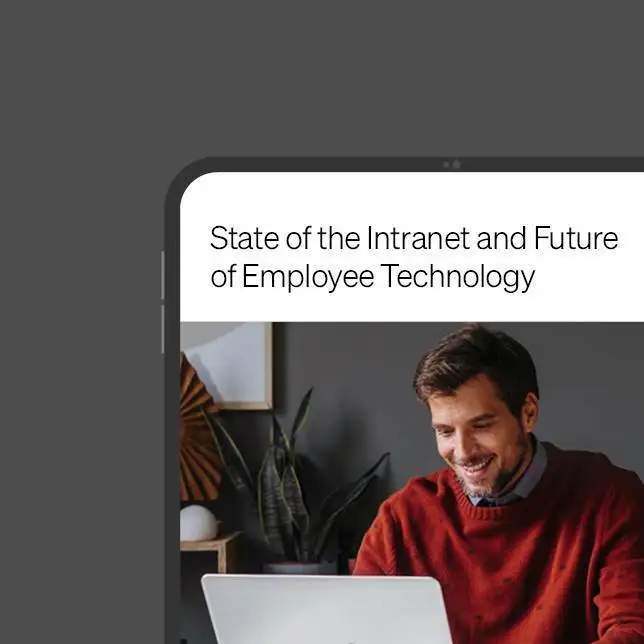The world is becoming smaller and smaller. People and businesses are making the most of technology, social media, and communication abilities to span distances, bringing groups and companies together. But sometimes, even though the capabilities are present, the strategies to accomplish those goals do not always lead to a cohesive environment. Culture, communication, and leadership can be as much of an impediment as they are an advantage. So, what’s a company to do in this time of the New Remote Reality?
In a recent episode of Simpplr’s Cohesion Podcast, Leslie Quinton, VP of Communications at Ubisoft, a gaming company, sat down with Simpplr’s Amanda Berry, Manager of Corporate Brand & Communications, and Head of Internal Communications. Leslie’s over 20-year career and experience in communications enabled her to give unique insights, especially on companies of diverse sizes and industries. In fact, you could say that Leslie is a walking comms playbook. Her unique perspective? The needs of an international communications organization.
When Leslie spoke with Amanda, she shared with her a list of proactive motions for global communications. They are:
- Moving beyond a traditional communications model to a more worldwide initiative. It must provide transparency and commonality, especially in language, communication, and cultural understanding, while incorporating leading-edge comms technology.
- How to improve company culture from a strategic, global mindset that incorporates a diversity of leadership in messaging, voice, and thought.
- Getting executive buy-in by proving the value of your internal comms, moving it from being viewed as a cost center to having actual ROI.
Transparency and Commonality
Saying that a global company needs to provide transparency and commonality is often easier said than done. But Leslie is particular about these motions. She believes that there needs to be a move beyond the traditional communications model to a more worldwide initiative. According to Leslie, the pandemic helped many companies transition, even incrementally.
The disruptive nature of the pandemic had a silver lining when it came to comms. It was incredibly disruptive, especially in fields such as manufacturing, where people could no longer be in a stereotypical office or work setting. For many, the only way to communicate was by traditional means, such as writing.
Any time there is a period of crisis and disruption, there is a time of innovation after. Such was the case of the COVID-19 pandemic. Leslie shared that companies at the beginning of the pandemic made the most of their comms strategies and systems by repurposing and building off of them. This movement enabled them to get more out of the old ways of doing things while adjusting to the new way.
For others, however, who were not progressing, it forced them not to lay back on the old paradigms. They had to shift their thinking around internal communications. They couldn’t use the “existing model and tweak it.” Consequently, they were forced to change platforms and the delivery of messaging. Some allowed themselves to be dragged into the new remote reality. While others seized the opportunity to change, especially addressing the needs of communication and cultural understanding from a global perspective.
Leslie shared that businesses must focus on providing transparency and commonality when setting up an international comms system while considering language, communication, and cultural understanding. One area that needs to be directly addressed is the local or regional lens that many do not consider. Leslie shared an example of an acquired company that never had a code of conduct before and how it was interpreted both globally and locally. Specifically, a whistleblower clause that all publicly traded companies must have.
The situation turned into circumstances of reporting on fellow employees who were taking parking spaces or office items not allocated to them. It required a need to take into account “cultural relativism,” where policies and strategies address people according to what they need to know and how best they can receive it. Leslie believes that to reposition how leadership’s message is viewed, communication technology must change. Why? Your employees are changing the way they communicate.
The new technology plus communications model must accommodate a population who now talks to people without seeing them. There is an entire generation who would rather text than talk. And texting has its own shorthand, social code, and etiquette. Your communications model has to evolve to keep up with this change. Also, consider the number of people who no longer read, but skim everything from books to articles. “How we communicate to one another has been absolutely revolutionized by our access to technology,” Leslie added.
So how do we proceed to create a new balanced model that is flexible? Most companies embrace a hybrid model that incorporates social media-designed communications, enabling people to consume information in short bites and condensed statements. Everything is happening at a rapid rate within organizations. We have to be prepared to change the manner of messaging and the message in the same way. That means utilizing cutting-edge communication platforms and technology to reach every last employee in an efficient and personable method.
Improve Company Culture from Diversity in Voice of Leadership
Company culture is never an easy thing to establish and grow positively. A great way to accomplish this is to utilize your internal comms. This type of change management is something Leslie is passionate about. What she finds extremely exciting is the cultural revolution that Ubisoft is going through within their organization and the industry as a whole.
As stated, Ubisoft is a company with an international presence. Many companies are becoming more global and having to accommodate, if not change, their processes to become a place that people will want to work for at the local level.
According to Leslie, when you’re trying to improve your corporate culture or get a higher net promoter score for the HR people, you must have more of a sense of becoming an employer of choice.
“It really starts with having a sense of transparency from the leadership because employees are sometimes underestimated in terms of how much they pay attention to the messages,” Leslie explained. “I think that it becomes critical that’s your leadership team. It’s not just one person. It’s really the people around them.”
Leslie admitted that this idea of a singular thought leader is an old model that companies need to break. Instead, spread out the responsibility and the vision amongst multiple leaders. Leslie went on to say, “But the leadership team has to be able to strongly communicate whatever that new inspiring vision is, and then be willing to be super transparent and even vulnerable about it.”
She also shared that the model of a singular “cult-like” leader is no longer sustainable long term. What is needed? The coaching leader manages alongside a talented group of people that surrounds them at the top.
This idea of a wider group of thought leaders ties in with Leslie’s next bit of advice: getting broad executive buy-in by proving the value of your internal comms.
The True Value of Internal Comms
One of the biggest challenges for internal comms is proving their value. To accomplish this is also a shift in mindset for executives. They need to see internal comms not as a cost center but as providing the overall employee experience and having definite ROI. This thought contributes significantly to being that “employer of choice.” So, how do you see communication as an added value and not a price tag?
The positioning of the message of Internal Comms is that by investing in it, you recognize that communications are a strategic element within your culture. It also shows that you are interested in the well-being of employee engagement. That is often difficult for some executives to understand because they don’t comprehend the value and ROI. In reality, they don’t appreciate the new employee experience.
The new employee experience is closely tied to employee morale. Through surveys, HR and leadership can show if people feel more or less engaged. We all know that a disengaged employee is a potentially churned employee. However, isolating the reason is not easily quantifiable.
Many contributors include salaries, employee compensations, KPIs, and other factors. These “distractor factors” enable decision-makers to say that ICs are “nice to have, but is it really needed?” But the proof is in the engagement. The truth is in the environment and experience you want to create. Leslie conveyed that at Ubisoft, the culture, and thus the experience, is centered around what they produce—entertainment and fun.
The reality is that companies aren’t always willing to take that risk, no matter the type of work they do. Does that correlate to how conservative your company is and its leadership? And how willing are they to invest in their communications and, thus, their employees? How, then, do you mitigate circumstances such as these?
To find out the answer, tune into the Cohesion Podcast. It is also available on Spotify and Apple Podcasts.














